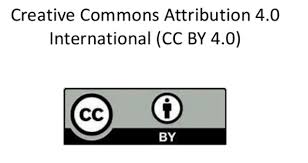Microbiological quality of beef and beef products in Dhaka city
DOI:
https://doi.org/10.47440/JAFE.2021.2407Keywords:
Beef, Bacteria, Meat safety, Public health, Ready-to-eatAbstract
The aim of the study was to observe the overall microbiological quality and occurrence of Escherichia coli, Listeria monocytogenes and Salmonella spp. in beef and beef products in Dhaka city, Bangladesh. Total 9 types of beef including 2 raw type beef, 3 ready-to-cook (RTC) and 4 ready-to-eat (RTE) beef samples were considered for microbiological analyses. Total Aerobic Count (TAC), Total Yeast Mold Count (TYMC), Total Coliform Count (TCC), Listeria spp., Salmonella spp. and E. coli count were measured in these beef and beef products to assess the microbial safety level. API Listeria Kit analysis was done to ensure the presence or absence of Listeria monocytogenes. Results showed that in raw, ready-to-cook (RTC) and ready-to-eat (RTE) beef items, the mean TAC ranges 6.2 to 6.5, 4.2 to 4.5 and 5.6 to 5.75 log CFU/g respectively. Similarly, the mean TCC ranges 3.3 to 3.6, 3.2 to 3.5, 3.3 to 3.8 log CFU/g respectively. TYMC ranges 3.3 to 4.2, 2.4 and 2.5 to 3.7 log CFU/g respectively for raw beef, RTC and RTE beef items. The presence and load of pathogenic microorganisms such as Salmonella spp., Escherichia (E.) coli, and Listeria (L.) spp. were examined. The occurrence of Listeria spp. E. coli and Salmonella in the beef and beef products has great significance in public health. According to the results, recommendation such as implementation hygienic rules, routine inspection, and training in the production chain may be suggested to increase safety in terms of microbiology as well as to minimize the risk of foodborne outbreak from the raw beef and RTC and RTE beef items.






 Publisher:
Publisher: 